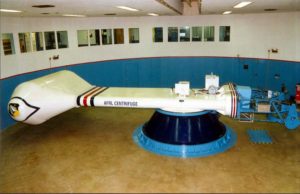Along with many civilians and military alike, I was saddened to read of the recent passing of Tom Wolfe . Wolfe wrote the book that introduced me to the mysteries, risks, and culture of military flight. Wolfe’s “The Right Stuff” published in 1979 challenged me to pursue Flight Medicine and test myself to survive some of the crazy escapades the pilots endure in their quest to become the next Chuck Yeager…..although we all know there will never be another Yeager.
This Memorial Day I pay tribute not just to the 1000’s of military pilots and aircrew who have lost their lives in training and combat, but also to the writer who inspired generations of would be pilots and who continues to inspire future young men and women searching for the stuff as Wolfe describes: “those with it would rather go out in a blaze of glory than never take the chance at just the glory.”
SWA pilot Tammy Jo Shults has got it as she recently saved a jet full of passengers with calm and cool. Read the WSJ piece “The Right Stuff at SouthWest Airlines. Chuck Yeager Meet Tammy Jo Shults” .
I wrote about the stuff in my tribute to John Glenn at his passing “John Glenn- Orbit the Block a Few Times a Day”.
Astronaut Scott Kelly , who spent a year in space, wrote the best tribute I have read in the NYT last week. Scott Kelly: How Tom Wolfe Changed My Life
According to Kelly, Wolfe worked on the book for years without a title until he had a conversation with a Law Enforcement friend that went something like this : “You know what?’” the friend said. “It takes guts to be a police officer, but you know who’s really got to have courage? Test pilots. Those guys have really got the right stuff.” And so it was and will forever be for pilots and astronauts.
The most difficult part of flight medicine training was completing the centrifuge protocol and its merciless series of high “G” spins. A “G” is the equivalent of what you experience with the Earth’s gravity at sea level. The most intense roller coasters in the world will take you from 4 G to 6 G for a few exciting seconds. The sustained 15 to 30 second bouts with 6Gs and 9Gs in the centrifuge is not exciting. It’s hang on, take the punch, and keep the blood in your brain.

When I entered the centrifuge at Brooks AFB Texas I needed to tell myself that maybe I had a bit of the stuff. All week I heard that thin endurance athletes sucked at tolerating Gs. This was strength and anaerobic power. We had big aerobic systems, low heart rates, and low blood pressure. Not a good launching pad for high sustained Gs. The G monsters tended to be power athletes with thick or no necks. This meant the brain was closer to the heart-good design for keeping the brain perfused under G forces when the blood was all rushing downstream to the legs.
Sharing below what it is like to test if you have a small piece of the righteous stuff . Tom’s words kept repeating in my oxygen deprived brain as I survived and qualified in the protocol for performance aircraft. Many stronger trainees did not complete it. Score one for the runners 🙂 My body was so sore after this that I could not walk normally for about a week. You recruit muscles you did not even know you had under the adrenaline rush. I also left all the food I had eaten that day (minimal as per good advice) as well as the day before in the parking lot.
Here is a series of videos from the protocol. You can see the “Gs” in the upper left of the screen as well as my rising heart rate (HR). Note: These are not pretty videos and if you want to see how you will look at age 90 this might be the best method.
1st stage- 6G 30 sec
2nd stage- 9G 15 sec
3rd stage – 7G check 6 (this is where you need to turn your head….harder than it sounds)
Final stage- 5G to 9G tactical
….and in case you were wondering what a G-LOC is, watch the last video of a trainee.
Finally sharing a favorite excerpt from the Chapter “Yeager” in The Right Stuff. Yes you know the voice……
Anyone who travels very much on airlines in the United States soon gets to know the voice of the airline pilot… coming over the intercom… with a particular drawl, a particular folksiness, a particular down-home calmness that is so exaggerated it begins to parody itself (nevertheless! —it’s reassuring)… the voice that tells you, as the airliner is caught in thunderheads and goes bolting up and down a thousand feet at a single gulp, to check your seat belts because “it might get a little choppy”… the voice that tells you (on a flight from Phoenix preparing for its final approach into Kennedy Airport, New York, just after dawn): “Now, folks, uh… this is the captain… ummmm… We’ve got a little ol’ red light up here on the control panel that’s tryin’ to tell us that the landin’ gears’re not… uh… lockin’ into position when we lower ’em… Now… I don’t believe that little ol’ red light knows what it’s talkin’ about—I believe it’s that little ol’ red light that iddn’ workin’ right”… faint chuckle, long pause, as if to say, I’m not even sure all this is really worth going into—still, it may amuse you… “But… I guess to play it by the rules, we oughta humor that little ol’ light… so we’re gonna take her down to about, oh, two or three hundred feet over the runway at Kennedy, and the folks down there on the ground are gonna see if they caint give us a visual inspection of those ol’ landin’ gears”—with which he is obviously on intimate ol’-buddy terms, as with every other working part of this mighty ship —”and if I’m right… they’re gonna tell us everything is copacetic all the way aroun’ an’ we’ll jes take her on in”… and, after a couple of low passes over the field, the voice returns: “Well, folks, those folks down there on the ground— it must be too early for ’em or somethin’—I ‘spect they still got the sleepers in their eyes… ’cause they say they caint tell if those ol’ landin’ gears are all the way down or not… But, you know, up here in the cockpit we’re convinced they’re all the way down, so we’re jes gonna take her on in… And oh”… (I almost forgot)… “while we take a little swing out over the ocean an’ empty some of that surplus fuel we’re not gonna be needin’ anymore—that’s what you might be seein’ comin’ out of the wings—our lovely little ladies… if they’ll be so kind… they’re gonna go up and down the aisles and show you how we do what we call ‘assumin’ the position'”… another faint chuckle (We do this so often, and it’s so much fun, we even have a funny little name for it)… and the stewardesses, a bit grimmer, by the looks of them, than that voice, start telling the passengers to take their glasses off and take the ballpoint pens and other sharp objects out of their pockets, and they show them the position, with the head lowered… while down on the field at Kennedy the little yellow emergency trucks start roaring across the field—and even though in your pounding heart and your sweating palms and your broiling brainpan you know this is a critical moment in your life, you still can’t quite bring yourself to believe it, because if it were… how could the captain, the man who knows the actual situation most intimately… how could he keep on drawlin’ and chucklin’ and driftin’ and lollygaggin’ in that particular voice of his— Well!—who doesn’t know that voice! And who can forget it! —even after he is proved right and the emergency is over.
That particular voice may sound vaguely Southern or Southwestern, but it is specifically Appalachian in origin. It originated in the mountains of West Virginia, in the coal country, in Lincoln County, so far up in the hollows that, as the saying went, “they had to pipe in daylight.” In the late 1940’s and early 1950’s this up-hollow voice drifted down from on high, from over the high desert of California, down, down, down, from the upper reaches of the Brotherhood into all phases of American aviation. It was amazing. It was Pygmalion in reverse. Military pilots and then, soon, airline pilots, pilots from Maine and Massachusetts and the Dakotas and Oregon and everywhere else, began to talk in that poker-hollow West Virginia drawl, or as close to it as they could bend their native accents. It was the drawl of the most righteous of all the possessors of the right stuff: Chuck Yeager.

